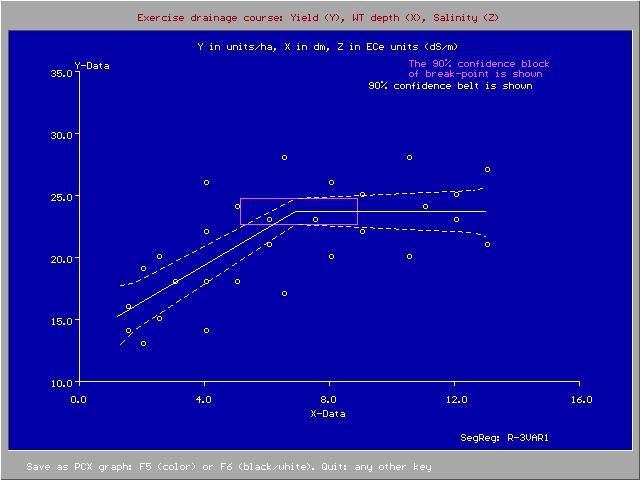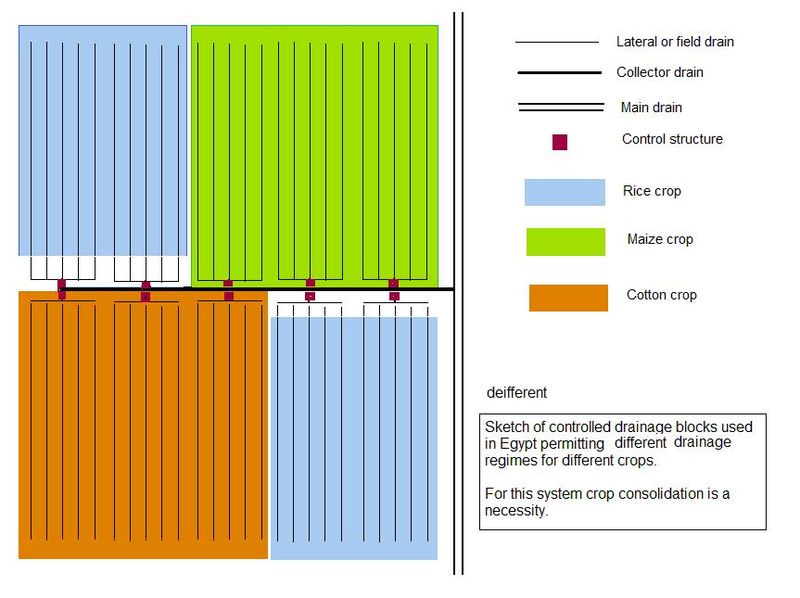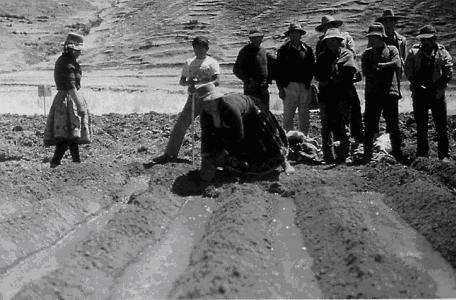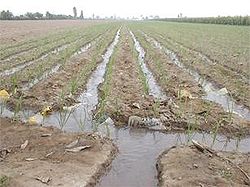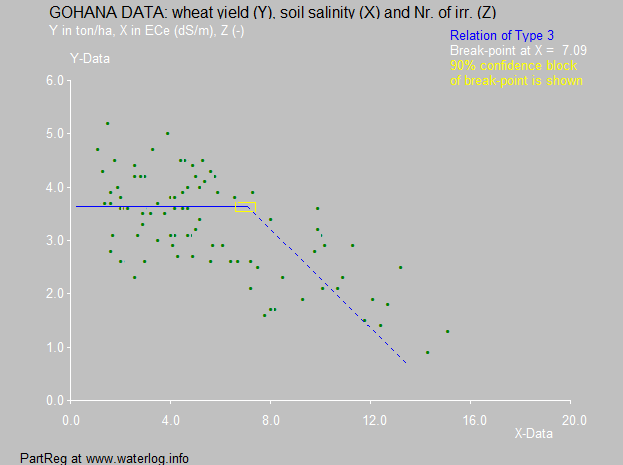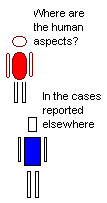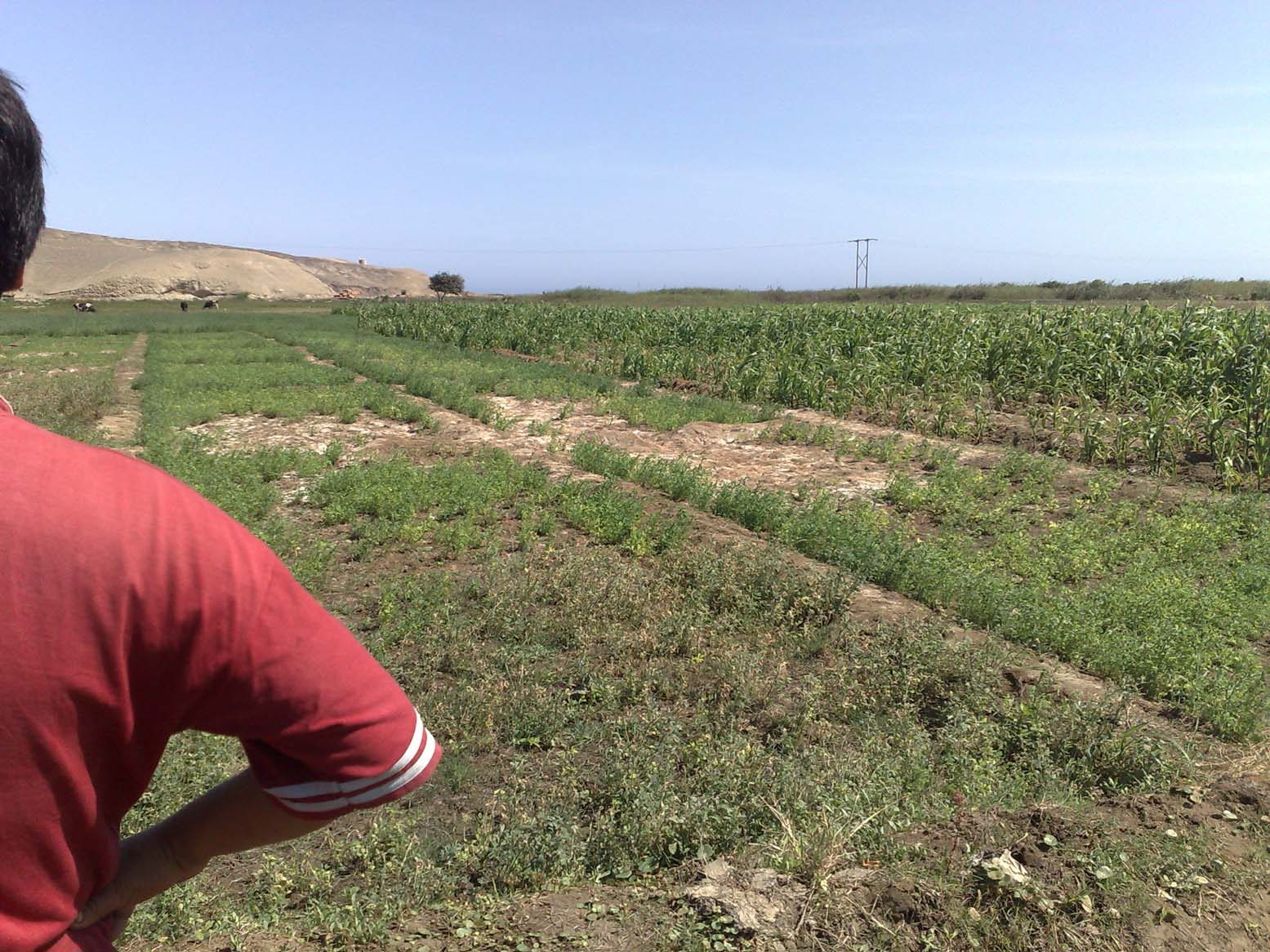
|
Looking over the shoulder of a farmer to his
salinized land with poor crop stand.
|
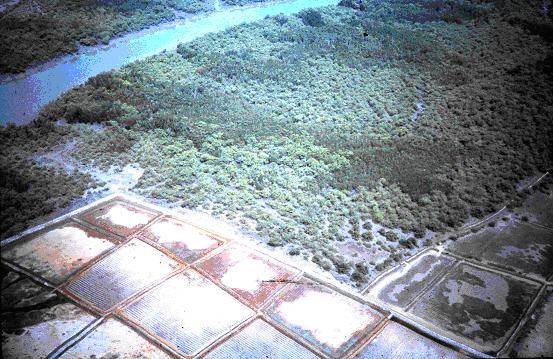
|
Rice polders along a sea arm in Guinea Bissau
amidst
the mangroves. There are acid
sulphate soils.
|
|
|
C1 - What are saline and salty soils, how do they
originate, where are they found, what is their
problem, how can the problem be solved? What is
their relation to irrigation, waterlogging and
drainage?
|
|
This is the paper on
soil salinity
There is also a programmed self-help exercise on
water and salt balances and leaching
(reclamation) of a saline, salty and sodic, soil
in Chacupe, Peru. Soil salinity, sodicity and
alkalinity are analysed here:
Chacupe case study
An article on the Chacupe case has appeared in
the International Journal of Environmental
Science, entitled "Reclamation of a saline
vertisol by irrigated rice cropping,
interpretation of data with a salt leaching
model", see
this website.
In addition, a description of salinity
development and control in a small
coastal delta in
Peru can be can be consulted here.
See also "Salinity control" in
Wikipedia
|
C2 - What is salt tolerance of crops and are there
any determinations of crop response to soil
salinity under farming conditions?
|
|
In this tolerance
paper examples are given of determination
of salt tolerance based on measurements in
farmers' fields on the relation between crop
production and soil salinity in 3 subtropical
countries.
See also the
article that appeared in the International Journal of
Agricultural Science, entitled: Crop Tolerance to
Soil Salinity, Statistical Analysis of Data
Measured in Farm Lands.
|
C3 - What are alkali, alkaline sodic and acid
sulphate (sulfate) soils (cat clays), how do
they originate, where are they found, what is
their problem, how can the problem be
solved?
|
|
This is a paper on
soil alkalinity, sodicity and acidity.
Alkalinity is strongly associated with the
presence of soda (Na2C03, sodium carbonate) in
the soil, ground or irrigation water.
A report on acid sulfate soils in the island of
Pulau Petak near Bandjermasin, South Kalimantan,
Indonesia, can be
viewed on line.
The formation of acid soils occurs frequently in
mangrove forest areas and is related to the
presence of pyrite (Fe2S, iron sulfide).
Here is an article on acid sulfate soils in
Guinea Bissau.
See also "Acid sulfate soils" in
Wikipedia, and:
Alkali soils in Wikipedia.
|
|

